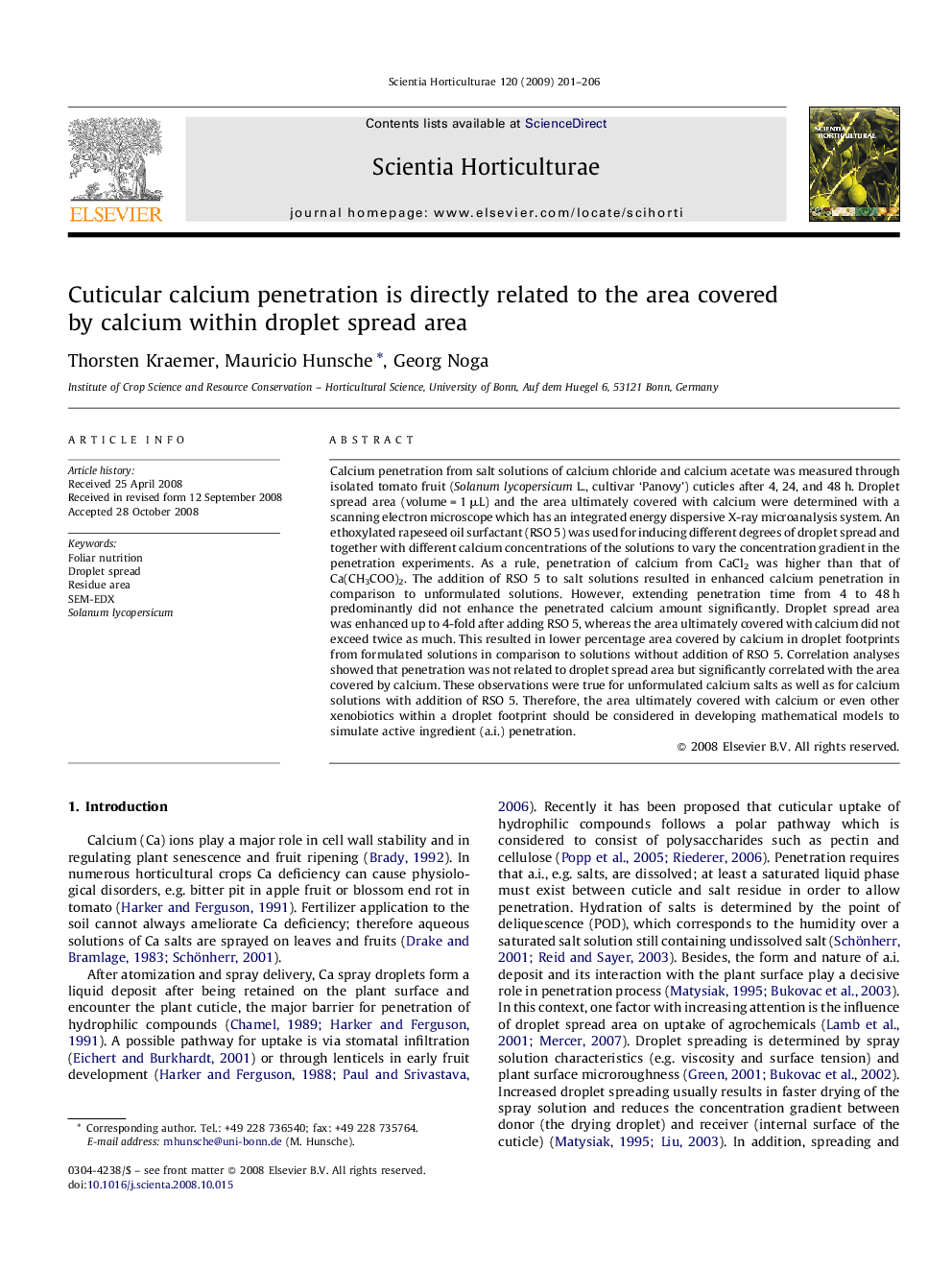| کد مقاله | کد نشریه | سال انتشار | مقاله انگلیسی | نسخه تمام متن |
|---|---|---|---|---|
| 4569243 | 1331329 | 2009 | 6 صفحه PDF | دانلود رایگان |

Calcium penetration from salt solutions of calcium chloride and calcium acetate was measured through isolated tomato fruit (Solanum lycopersicum L., cultivar ‘Panovy’) cuticles after 4, 24, and 48 h. Droplet spread area (volume = 1 μL) and the area ultimately covered with calcium were determined with a scanning electron microscope which has an integrated energy dispersive X-ray microanalysis system. An ethoxylated rapeseed oil surfactant (RSO 5) was used for inducing different degrees of droplet spread and together with different calcium concentrations of the solutions to vary the concentration gradient in the penetration experiments. As a rule, penetration of calcium from CaCl2 was higher than that of Ca(CH3COO)2. The addition of RSO 5 to salt solutions resulted in enhanced calcium penetration in comparison to unformulated solutions. However, extending penetration time from 4 to 48 h predominantly did not enhance the penetrated calcium amount significantly. Droplet spread area was enhanced up to 4-fold after adding RSO 5, whereas the area ultimately covered with calcium did not exceed twice as much. This resulted in lower percentage area covered by calcium in droplet footprints from formulated solutions in comparison to solutions without addition of RSO 5. Correlation analyses showed that penetration was not related to droplet spread area but significantly correlated with the area covered by calcium. These observations were true for unformulated calcium salts as well as for calcium solutions with addition of RSO 5. Therefore, the area ultimately covered with calcium or even other xenobiotics within a droplet footprint should be considered in developing mathematical models to simulate active ingredient (a.i.) penetration.
Journal: Scientia Horticulturae - Volume 120, Issue 2, 2 April 2009, Pages 201–206